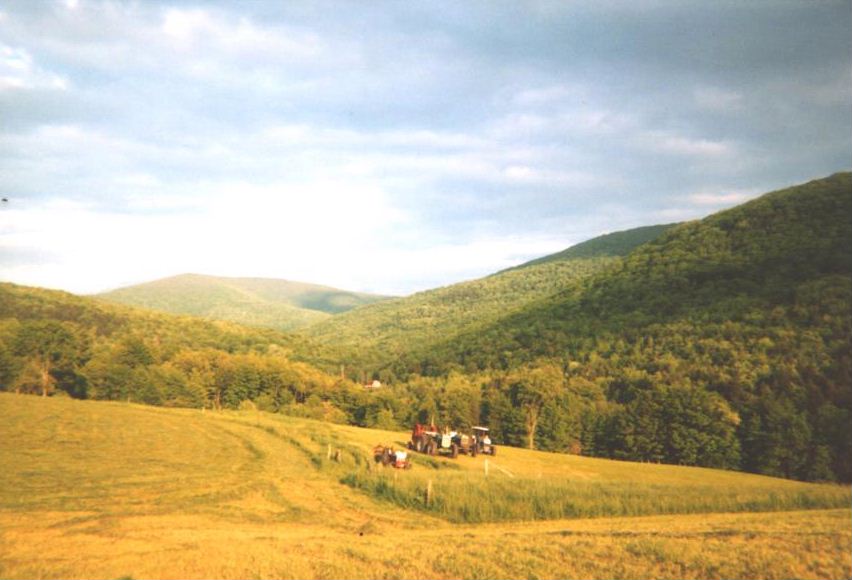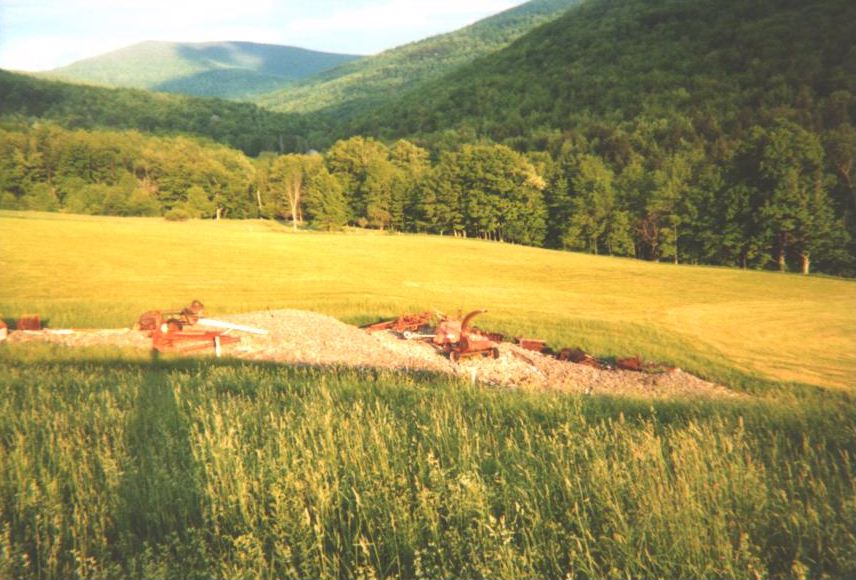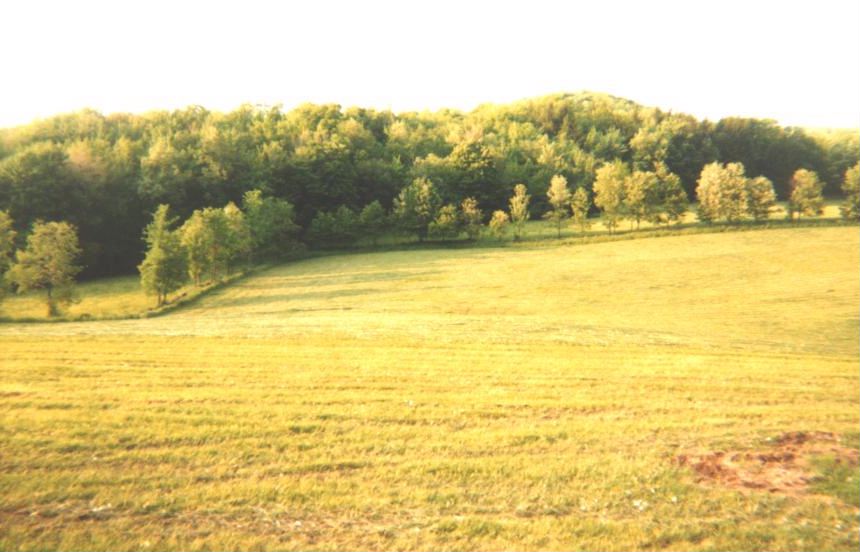|
|
|
 |
On The Farm |  |
|
These fantastic views come from the Catskill Mountains, located in the heart of New York State. The Catskills are green, beautiful, and secluded. Much of the land is state-owned land in the Forest Preserve - forever wild and protected from the logger's axe/chainsaw or the farmer's plow.
|
||
 |
The panoramic view from the knoll Here is the view from the "knoll" looking west towards Frost Valley and more state land. Behind the camera is the view towards the east and off to the south and, although it cannot be seen, the Pepacton Reservoir - a main feeder for New York City's water system. Interesting fact, 100 years ago, most of this land was barren; the mountains that were once covered in hemlocks were clear cut for their acidic bark and resins and used in the tanning of the hydes of the mink, wolves, bears, deer, coyotes, raccoons, and foxes, etc also garnered from our forest. There are two towns to the north of us whose names make perfect illustration of what the tanning industry meant to the region- Hunter and Tannersville. Most of the mountains now are covered by oak, maple, cherry, and other hardwood species. But these are rapidly being replaced, in the natural process of forest succession, by the hemlocks - the climax forest staple of the Catskills. Although, there is a very significant threat to the health of the hemlock - the hemlock woolly adelgid. The adelgid is an exotic pest from Asia, I think, that infests and kills hemlock trees. |
|
 |
Stonepile This gigantic stone pile was made by my grandfather - using only a team of horses and his own will. He ammassed most of this before the days of tractors. And he did it mostly alone - my father was too young and no hired men could keep up with him. It was once said that he would never ask anyone to do something he would not - but there was nothing he would not do, on the farm anyway. We now use it to prrotect some of our older machinery from rotting into the dirt. It has also proven to be a valuable source of small stones both for drainage ditches and even for stonewalls - field stone walls are in demand in our area. Sidenote: he took second place for his cauliflower at the World's Fair in Chicago 1927. |
|
 |
Baleage This is the high-moisture hay that we make to feed to our heifers and dairy cows. Instead of drying the hay for several days and then baling it as is the process with dry hay, we mow it one day and then bale it and wrap it the next day - moisture content being between 35-60%. The cows like it more, it is more nutritious, and it is easier to make in a wet year, as 2003 certainly was. Inside the wrap, the bale "ensiles" and preserves the nutritional value of the grass and comes out more like regular grass than dry hay does. From this vantage point, you are looking into the freshly mowed field, ready for baling and wrapping. If you look up the mountain we are facing, you are looking at Belleayre Ski Center, the New York State run ski resort. The wrapped bales look like giant marshmallows, or so our niece thought. |
|